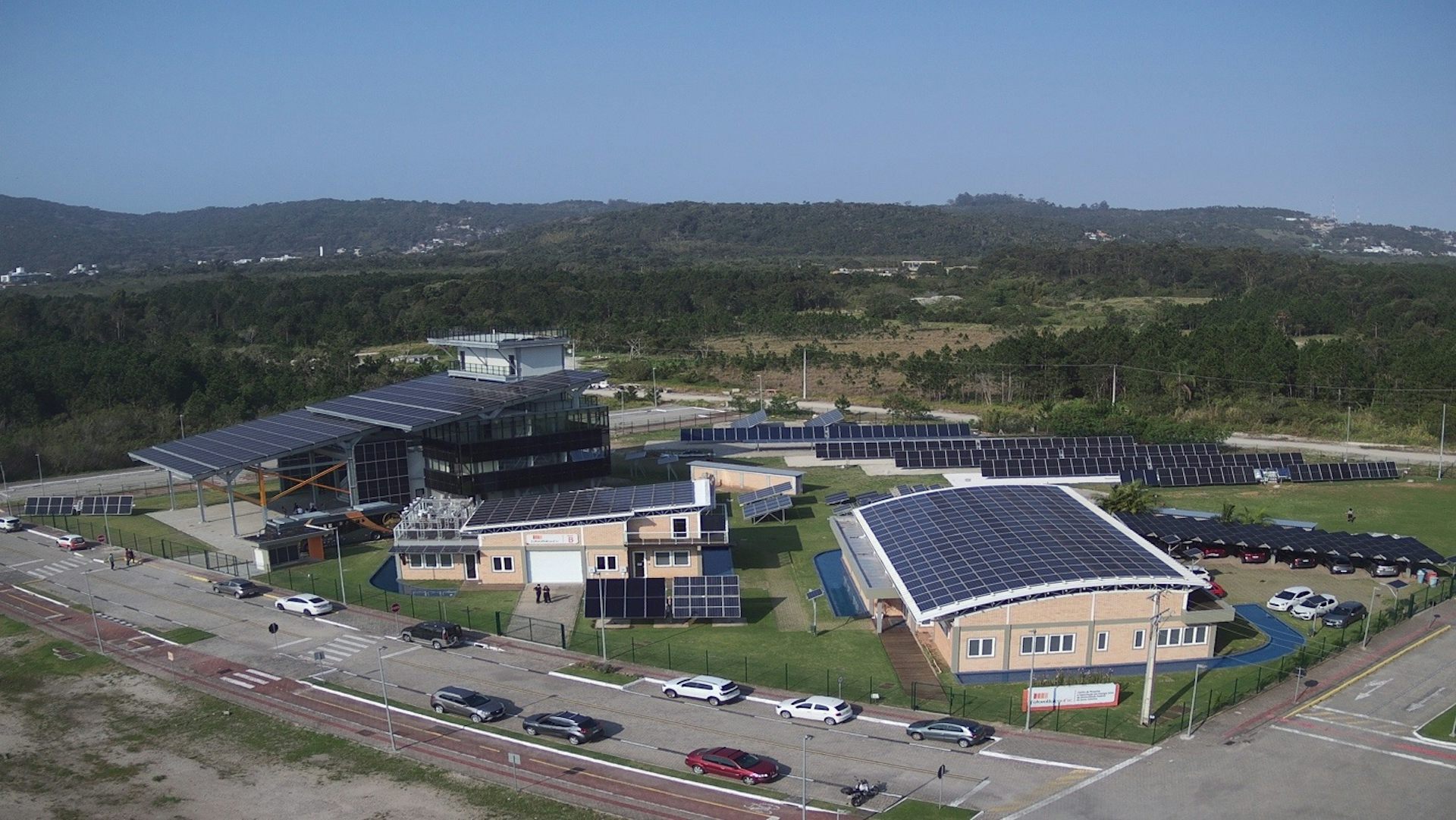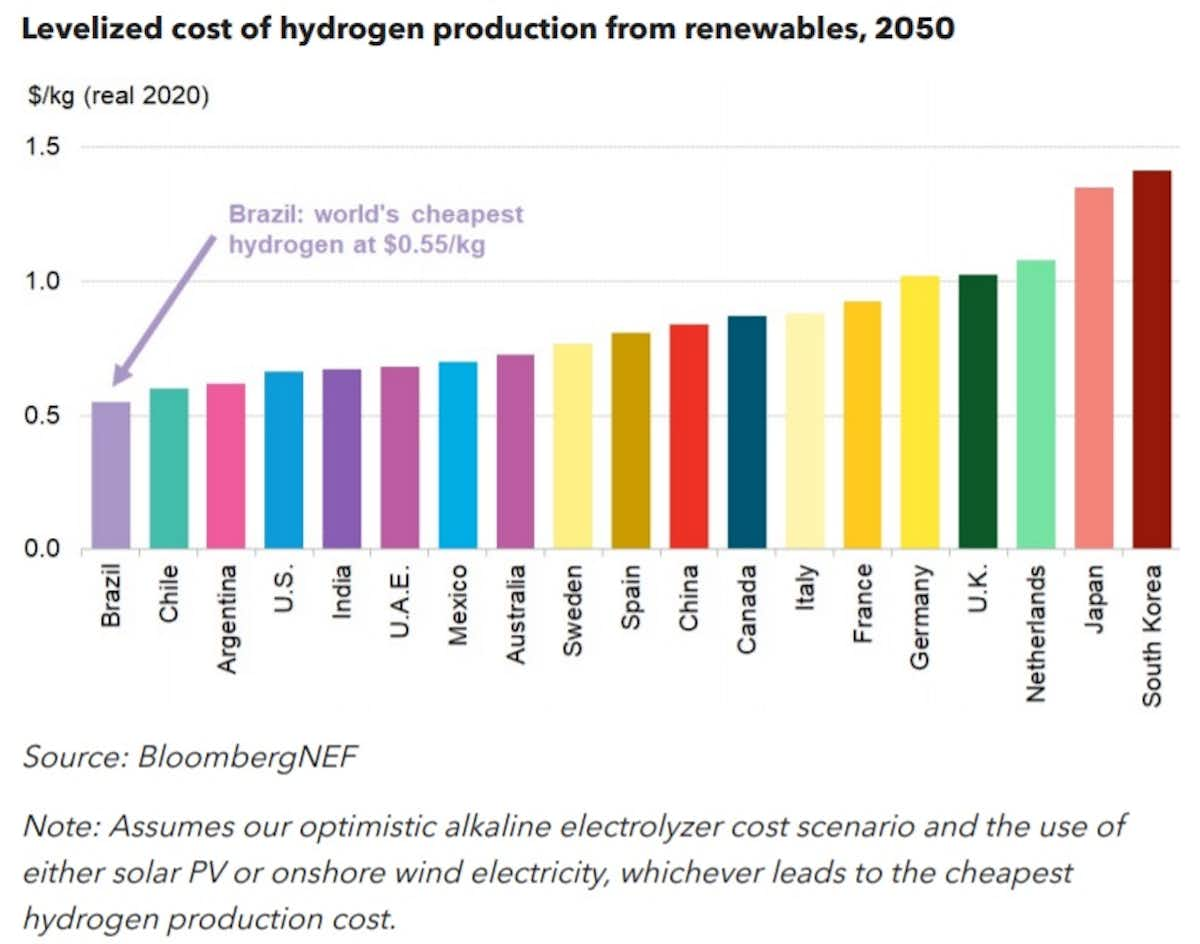
In the context of the international search for energy transition alternatives, one of the most promising topics today is green hydrogen. And Brazil is one of the countries best placed to lead the production of this abundant, cheap and potentially efficient energy alternative. But after all, what is green hydrogen, and why does Brazil have so much potential with it? To get there we first need to understand what hydrogen is :
Hydrogen (H2) is a colorless and odorless gas, highly flammable and spontaneously combusts in open air, producing a colorless flame. Hydrogen is the lightest of the chemical elements and has the simplest possible atomic structure: a single electron orbiting a nucleus consisting of a single proton. It is by far the most abundant element in the Universe, although not on Earth, where it occurs mainly combined with oxygen as water (H2O).
Stars, including the Sun, are formed mainly by hydrogen, which can also assume liquid and solid states. Hydrogen also has a high energy content, releasing three times more energy when burned than gasoline . But, unlike gasoline, hydrogen is a clean energy vector. When reacted with oxygen in combustion to produce heat, or in a fuel cell to produce electricity, energy and water are the only two end products.
Since hydrogen only exists on Earth in combination with other elements, mainly in water, and in hydrocarbons (natural gas, coal and oil), in combination with carbon, it needs to be separated from these other elements to be used as fuel. This process is extremely energy-intensive, using large amounts of energy which, depending on its origin, will give the “color” used in the nomenclature adopted to classify the different ways of obtaining hydrogen fuel.
The many “colors” of hydrogen
The different colors attributed to the way hydrogen is produced start with gray, when it comes from hydrocarbons or from the electrolysis of water using a fossil electrical energy source (coal or natural gas thermoelectric plants, for example). The largest production of gray hydrogen is in China, which has an energy matrix predominantly made up of coal-fired thermoelectric plants.
Hydrogen is called blue when there is the capture and storage of CO2 resulting from hydrocarbon reforming processes or the production of thermoelectric energy to fuel water electrolysis. Giving hydrogen this blue hue, however, is also a trick that disguises the methane (CH4) emissions involved in the process. And, as methane is a greenhouse gas around 21 times more potent than CO2 itself, there are serious doubts about how much blue hydrogen can contribute to the sustainability expected from hydrogen technology.
Other colors to designate the origin of energy or input to produce hydrogen include pink (when the primary source of electrical energy is nuclear), turquoise (in which a process called methane pyrolysis is used to produce hydrogen and solid carbon, which can be stored or used in other processes), yellow (when solar energy is specifically used to power the electrolysis process) and, finally, green (when any renewable source of energy is used in electrolysis, such as solar or wind ).
High cost is an obstacle
Technologies that allow the use of hydrogen as a fuel or as an energy carrier have been known for many years, but for reasons mainly of cost, it has not yet been used on a large scale. With the pressure to reduce the emission of greenhouse gases that are resulting in climate change that could lead to the destruction of our planet, however, hydrogen is being presented as a potential source of energy that can make a decisive contribution to the transition to a sustainable energy matrix .
Currently, however, 99% of hydrogen used as fuel is still gray, produced from hydrocarbons and non-renewable sources, and less than 0.1% is produced through the electrolysis of water, according to the International Energy Agency ( IEA) .
The biggest obstacle to expanding the use of hydrogen is related to the large amounts of energy and the costs of its production that do not involve the emission of CO2. Until now, natural gas, coal and petroleum derivatives are the sources of this energy, so the production of gray hydrogen continues to pollute the environment with CO2.
More recently, however, renewable and clean energies, such as solar and wind, have started to be used in the production of hydrogen through water electrolysis. Electrolysis uses an electrical current to split water in a device called an electrolyzer. The result is so-called green hydrogen, 100% sustainable, but for now still much more expensive to produce than gray hydrogen.
With the sharp reduction in the costs of solar photovoltaic and wind technologies, generating green hydrogen and its derivatives – such as ammonia (NH3), synthetic fuels, green fertilizers, etc. – from renewable sources has become a topic of great interest not only technical and scientific, but also economic, social and environmental.

Cheaper production in Brazil
Currently, when compared to the production of gray hydrogen from natural gas or coal, green hydrogen costs more than twice as much. The production of green hydrogen in Brazil, from solar and wind energy, has been evaluated as a cheaper way of producing it. The expectation is that by 2050 Brazil will produce the cheapest green hydrogen in the world, costing half the price at which gray hydrogen is produced today. But a lot of research and development still needs to happen to get there.
Returning to the “colors” of hydrogen, the entire spectrum used in this nomenclature can be summarized as green and gray. Only hydrogen produced from the electrolysis of water and which uses a renewable source to provide electrical energy for this process is green and sustainable. All other technologies (and colors) in hydrogen production that involve the emission of greenhouse gases must be grouped in gray.
The production of green ammonia can range from the fertilization of low-productive areas in the developing world to the propulsion of large ships that daily cross the oceans burning fossil fuels. Commercial aviation can also benefit from the development of synthetic and renewable fuels based on green hydrogen, and vehicles powered by fuel cells powered by green hydrogen complement the hydrogen economy ‘s large list of applications .
The association of the Brazilian sun and winds with the abundance of water available in the country can significantly contribute to the competitiveness of Brazilian green hydrogen. At the Photovoltaic Solar Energy Laboratory at the Federal University of Santa Catarina (UFSC) in Florianópolis , we are producing hydrogen, ammonia and green fertilizers from rainwater captured by the same photovoltaic panels that make up the roofs and facades of the building, and which generate electrical energy needed for this from the Sun.
– Ricardo Ruther, Professor, Federal University of Santa Catarina (UFSC)

